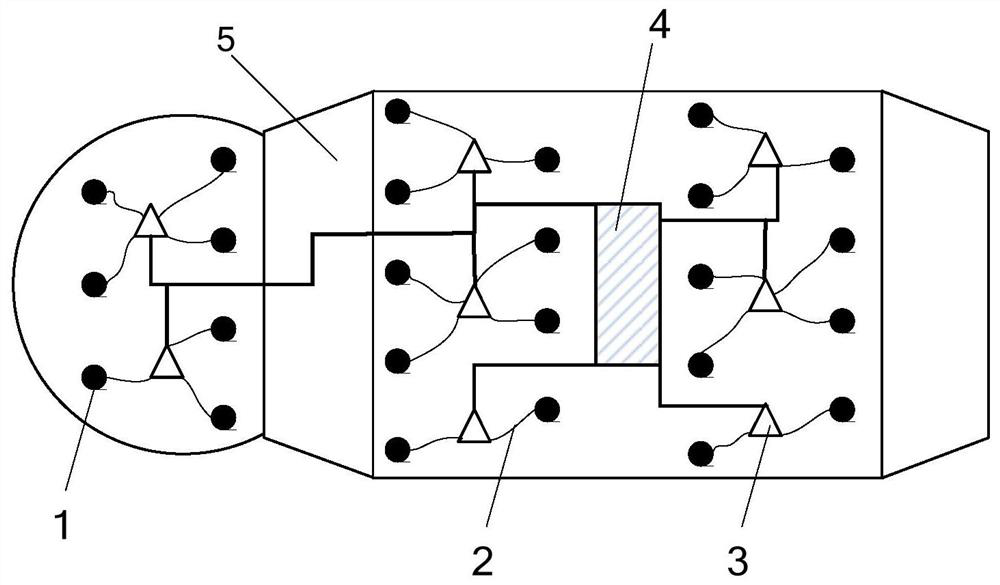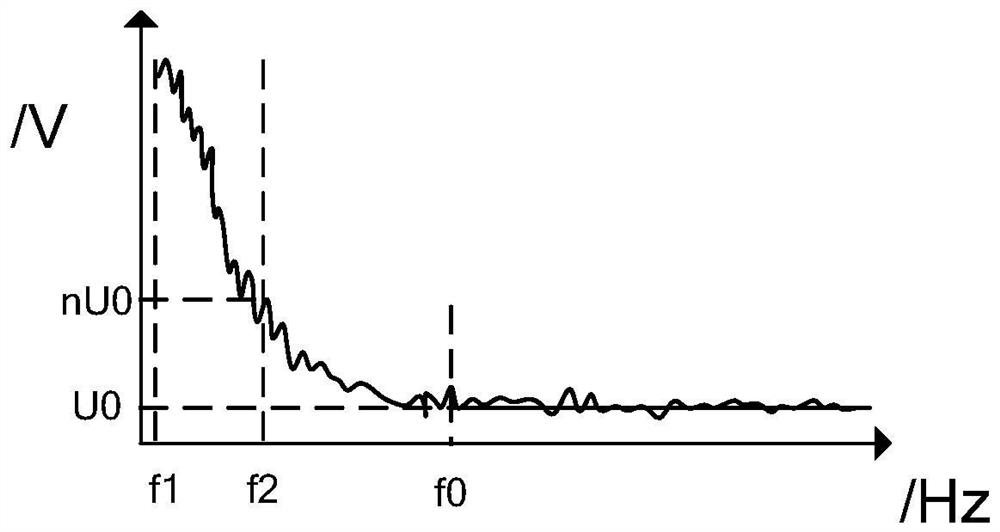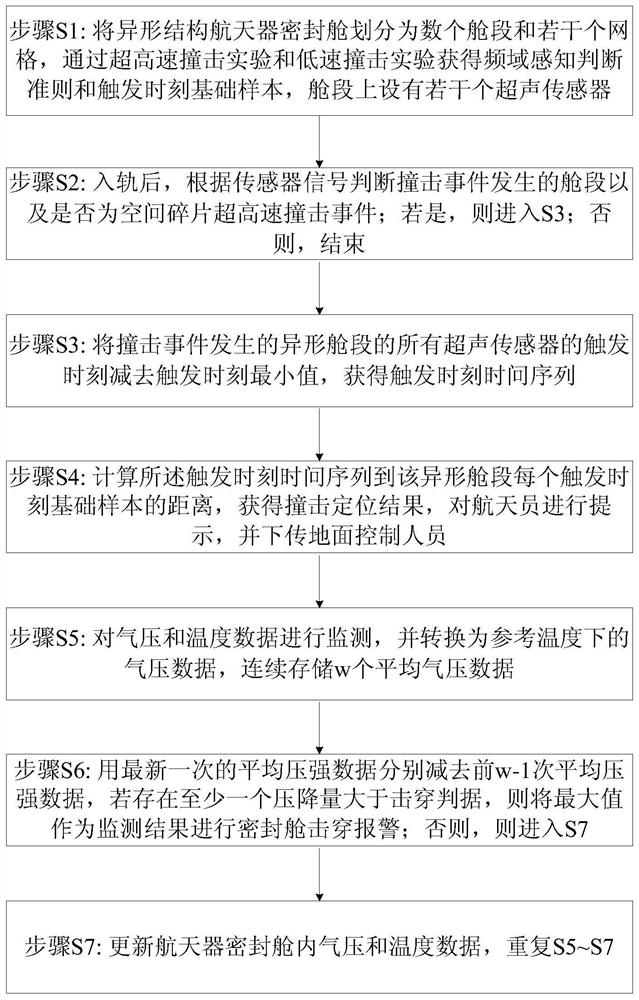A method for monitoring the impact of space debris on the airtight cabin of a special-shaped spacecraft
A technology for space debris and spacecraft, which is applied to space navigation vehicles, instruments, aircraft, etc., can solve the problems that cannot meet the impact monitoring requirements of spacecraft special-shaped structures, and achieve the effect of high impact positioning accuracy
- Summary
- Abstract
- Description
- Claims
- Application Information
AI Technical Summary
Problems solved by technology
Method used
Image
Examples
Embodiment
[0045] Such as figure 1 As shown, it is a block diagram of the composition principle of the positioning system of the present invention. The special-shaped spacecraft airtight cabin of the present invention mainly includes a surface ultrasonic sensor 1, a data transmission line 2, a charge amplifier 3 and a data processing unit 4, and 5 in the figure is a spacecraft airtight cabin. The ultrasonic sensor 1 is fixed on the inner surface of the spacecraft airtight compartment 5 by glueing, and a plurality of ultrasonic sensors 1 form a sensor array (for example, the distance between any nearest neighbor sensor is less than 3m), and are connected to the charge amplifier 3 through the data transmission line 2, and the charge amplifier 3 It is connected with the data processing unit 4 through the data transmission line 2.
[0046] The airtight cabin is composed of 4 cabin sections, which are spherical section, front cone section, column section and rear cone section. There are quad...
PUM
 Login to View More
Login to View More Abstract
Description
Claims
Application Information
 Login to View More
Login to View More - R&D
- Intellectual Property
- Life Sciences
- Materials
- Tech Scout
- Unparalleled Data Quality
- Higher Quality Content
- 60% Fewer Hallucinations
Browse by: Latest US Patents, China's latest patents, Technical Efficacy Thesaurus, Application Domain, Technology Topic, Popular Technical Reports.
© 2025 PatSnap. All rights reserved.Legal|Privacy policy|Modern Slavery Act Transparency Statement|Sitemap|About US| Contact US: help@patsnap.com



